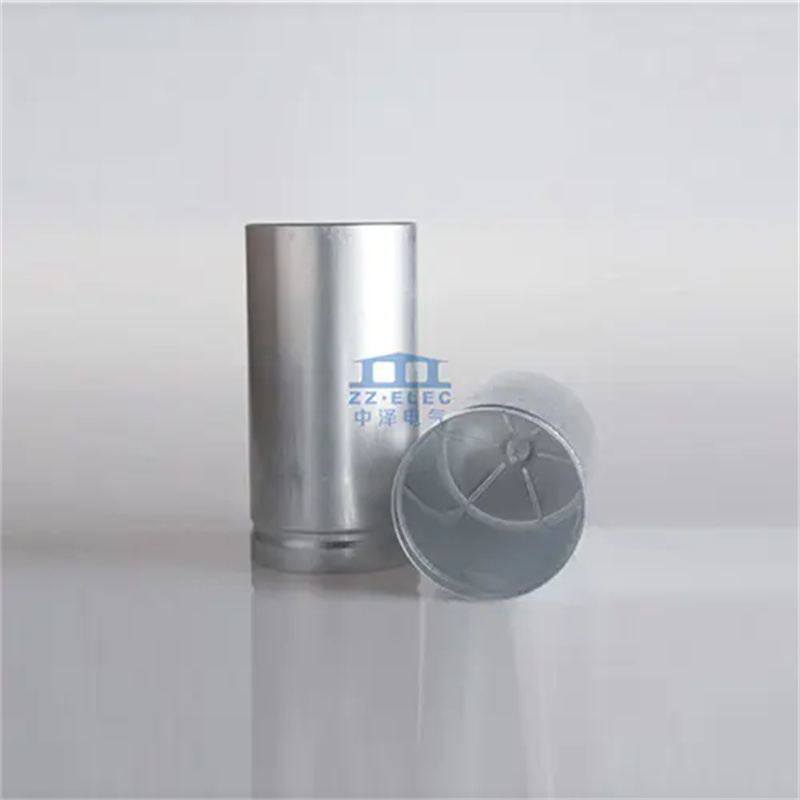Fuel Filter Structure
Fuel filter cover&housingType: nearly every existingMaterial: AL1060We specialize in Aluminum cold extrusion. Fuel filter cover and housing could ...

When "Ultra" is no longer just a marketing jargon: Are we underestimating the limits of capacitor technology?
In traditional cognition, capacitors are just inconspicuous supporting roles on circuit boards, but a new generation of supercapacitor components is subverting this positioning. Through the exquisite combination of three-dimensional porous graphene electrodes and ionic liquid electrolytes, these seemingly ordinary components have achieved a volume energy density of 15Wh/L - this is equivalent to compressing a small power station into a space the size of a matchbox. When new energy vehicles brake urgently, who would have thought that these components would devour thousands of watts of regenerative energy in milliseconds?
Energy dance in the nano-maze: How does 1 gram of material create a football field-level energy storage surface?
Through an electron microscope, the electrode materials of supercapacitor components show amazing nano-scale landscapes. The winding channels in each gram of active material are enough to cover the area of a standard football field if fully unfolded. This microscopic maze constructed by advanced carbon materials allows charges to shuttle freely at the atomic scale. When researchers introduced nitrogen doping technology, the charge storage capacity increased by an astonishing 35% - is the ingenious design of materials science rewriting the basic rules of energy storage?
5 milliseconds of blitzkrieg: What kind of technology can keep the grid frequency unchanged?
In the smart grid control center, supercapacitor components are performing unknown "speed and passion". When the power load fluctuates suddenly, these components can complete the charge and discharge switching within 5 milliseconds, controlling the grid frequency deviation within the demanding range of ±0.01Hz. Compared with traditional energy storage devices that require a few seconds of response time, is this nearly instantaneous adjustment capability redefining the stability standard of the power system? In scenarios such as power supply for critical medical equipment, this microsecond gap may mean the difference between life and death.
-40℃ to 125℃ calm: the temperature control philosophy that polar probes are all learning from?
When the capacity of ordinary lithium batteries drops sharply in severe cold, supercapacitor components equipped with special electrolytes still maintain more than 90% of their performance output. Under the midday sun in the equatorial region, even if the internal temperature rises to 125°C, the cycle life is still unaffected. Does this stable performance across a temperature difference of 165°C imply that humans have finally conquered the environmental adaptability problem of electronic devices? From Mars rovers to deep-sea cable repeaters, these inconspicuous components are writing a new chapter in power supply in extreme environments.
A million cycles are just the starting point: What materials can withstand 273 years of daily charging and discharging?
Imagine an energy storage device that has been working continuously since the Qianlong period of the Qing Dynasty - this is the time shock brought by the million-cycle life of supercapacitor components. Laboratory data show that the optimized components still have a capacity retention rate of more than 90% after 1 million complete charges and discharges. Does this performance, which almost violates the material fatigue theory, mean that we are touching the technical threshold of "electronic immortality"? In high-frequency application scenarios such as subway regenerative braking, this durability is creating amazing economic benefits.
The green revolution of dry manufacturing: How can electrode production say goodbye to toxic solvents?
The toxic solvents volatilized in traditional electrode preparation were once a nightmare for factories, but the new generation of dry process is like making puff pastry, directly pressing active materials and conductive agents into shape. This breakthrough not only eliminates 95% of VOCs emissions, but also reduces production costs by 40% and energy consumption by 60%. As environmental regulations become increasingly stringent, is this clean production technology becoming a necessary skill for the industry to survive? From the perspective of carbon footprint, the amount of CO2 emissions reduced by each ton of dry electrode is equivalent to the amount absorbed by 300 fir trees in a year.
"Tai Chi Master" in the power grid: How to use flexible energy to resolve power shocks?
In the face of sudden load changes, supercapacitor components are like masters of Tai Chi, using softness to overcome hardness. When large motors start and cause voltage drops, they can release thousands of amperes of compensation current within 10 milliseconds. Is this precise energy buffer redefining the standard of power supply quality? For precision industries such as semiconductor manufacturing, this millisecond-level voltage stabilization capability may be the key to improving yield rate.
The Fantasy Prophecy of Pseudocapacitive Materials: Where is the Next Breakthrough Hidden in the Periodic Table?
When researchers discovered reversible redox reactions in transition metal oxides, the energy density ceiling of supercapacitors was raised again. Does this "hybrid" characteristic of both fast capacitor response and high battery energy storage indicate a new evolutionary direction for energy storage technology? With the in-depth study of elements such as ruthenium and manganese, will we soon be able to witness the advent of a new generation of components with doubled energy density? In the laboratory, these materials are showing exciting potential.
From smart grids to deep space exploration, supercapacitor components are breaking the boundaries of engineering imagination in various fields. While traditional technologies are still being gradually improved, they have rewritten the rules of energy storage as revolutionaries. In this silent technological revolution, who can assert how its ultimate form will reshape our energy future? Perhaps the answer is hidden in those nanoscale channels, waiting for scientists to discover.